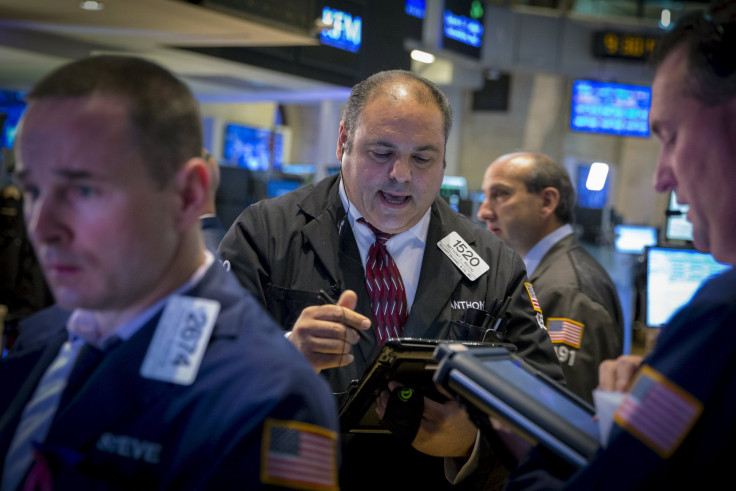Dow Jones Industrial Average Edges Higher As UnitedHealth Group Inc (UNH) Shares Gain 2%, Nasdaq Composite Sets A Record

U.S. stocks traded higher Tuesday, with the Nasdaq composite setting yet another record. The index leaped to an intraday high of 5,163.42, the third time in less than a week the index has leaped past its all-time record set during the peak of the dot-com bubble era.
The Dow Jones Industrial Average (INDEXDJX:.DJI) rose 21.95 points, or 0.12 percent, to 18,141.73. The Standard & Poor’s 500 index (INDEXNASDAQ:.IXIC) added 0.31 points, or 0.01 percent, to 2,123.16. The Nasdaq composite (INDEXSP:.INX) gained 1.74 points, or 0.01 percent, to 5,163.42.
Shares of Dex Media Inc. (NASDAQ:DXM) soared nearly 25 percent Tuesday, boosting the Nasdaq composite higher. Shares of the local-marketing and yellow pages specialist for businesses have gained nearly 50 percent in the last four trading sessions after the company hit a 52-week low last week amid executive turnover and board resignations this quarter.
Dow component UnitedHealth Group Inc. (NYSE:UNH) led the blue-chip index higher Tuesday, adding 2 percent. The S&P 500 telecommunications sector was the largest gainer, adding nearly 2 percent after shares of AT&T Inc. (NYSE:T) rose 3 percent.
Investors also weighed a series of data points on the U.S. housing market and U.S. business investment. New home sales rose 2.2 percent in May to a seven-year high as sales reached a seasonally adjusted annual rate of 546,000 units, the highest level since February 2008, the Commerce Department said Tuesday.
The data comes a day after U.S. home resales last month surged to the highest level since November 2009, signaling the recent rise in mortgage rates pushed hesitant buyers to purchase homes before rates increase further.
The surge in sales indicates that stronger employment has bolstered the housing market this spring after a sluggish winter.
“There is now a wide mix of evidence showing that, after a very weak start to the year, the economy is booming again,” Paul Ashworth, chief U.S. economist at Capital Economics, said in a research note Tuesday, adding that first-quarter weakness was “largely weather-related.”
Economists are looking ahead to Wednesday's third and final revision to the Commerce Department’s U.S. gross domestic product data for the first quarter after the U.S. economy shrank in the first three months of the year, caused in part by a slowdown in shipping due to West Coast port disputes and harsh winter weather.
Economists forecast the U.S. economy contracted at a seasonally adjusted annual rate of 0.2 percent in the first quarter, compared with the Commerce Department’s second estimate of 0.8 percent contraction in May.
Ashworth expects U.S. GDP growth will expand to 3 percent annualized in the March-to-June quarter.
Separately, U.S. durable goods dropped 1.8 percent in May, falling more than expected. But the plunge was due in part to volatility in aircraft orders. Economists say the underlying momentum in the data indicates stronger momentum in the second quarter.
“The stronger dollar and sluggish global growth are weighing on business spending, but reassuringly, domestic activity is resilient and momentum exiting in the second quarter is firming,” Gregory Daco, head of U.S. macroeconomics at Oxford Economics, said in a research note Tuesday.
Nondefense capital goods orders, excluding aircraft, which is a closely watched measure for future business spending plans, rose 0.4 percent in May, reversing a 0.3 percent decline in April.
© Copyright IBTimes 2025. All rights reserved.






















